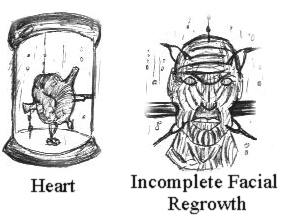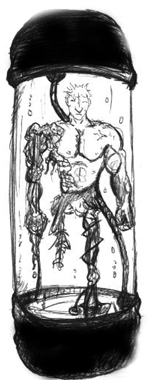
In later years non-embryonic cloning became possible as engineered life forms and synthetic tissue and skin was developed. Using DNA as a blue print, an indeviduals organs could be grown in a matter of minutes. The process is known as Anocellular Factorma. The organs, bodies, or tissue being produced is spoun at an extreme speed layer by layer. Like a series of plates stacked apon one another.

This technology allows for the saving of countless lives. It is also relivly inexpensive, which is anohter great aspect of non-embryonic cloning. There is, however, a down side.
The technology to reproduce organs and tissue is simple, there is a more complicated science which uses Anocellular Factorma as a basses. The process, sometimes called cosmetic enhancement, takes existing organs and tissue and alters them in such a way as to "improve" them. People can be made stronger, faster, and taller. Even altered to the extent to where they are no longer of identifible as a species. Skin can be made many times more stronger and flexible. Bones can be hollowed and wings added, it is the true designer body.

Copyright © 2000 Charles Bird.